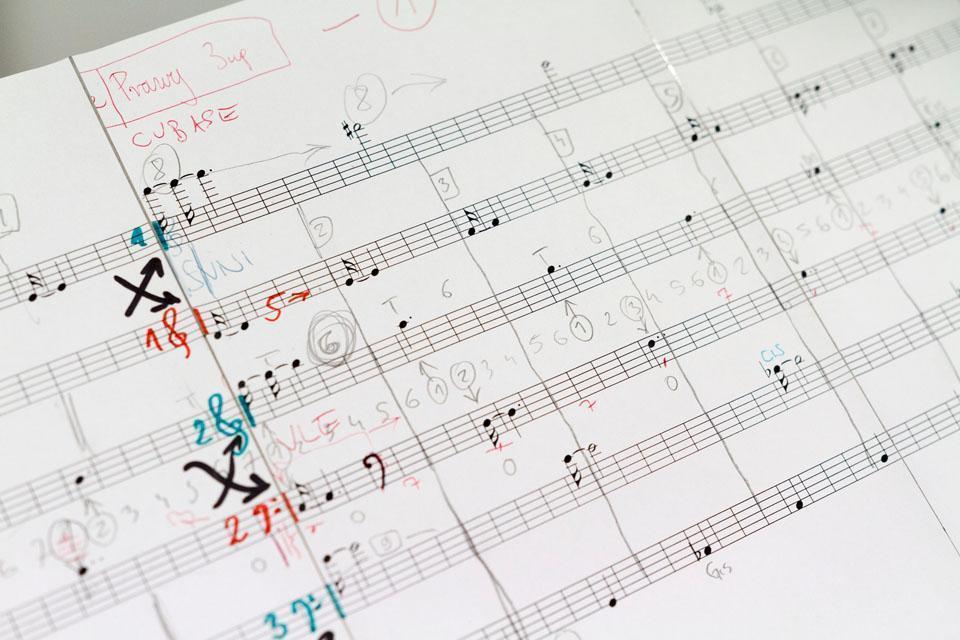Piotr Bosacki
The score for the “Little scroll”
Piotr BosackiThe score for the “Little scroll”, 2005object, print, markers, pencil, sellotape on paper, 29.5 × 657 cm
Collection II of the Arsenal Gallery in Białystok. Work donated to the Arsenal Gallery by the artist in 2015

The Little scroll belongs to a series of pieces of music composed by Piotr Bosacki in the period 2005–2013. Their conception is based on a procedure used by composers of the modern Flemish school. In this conception, a score, in addition to the standard course from left to right, can also be read and played in a mirror image, from the end. Both of these variants can be played simultaneously and thus create a duet. During the recording, the score of the Little scroll had the form of a transparent screen with notation written on it. The musicians sat on both sides of it, playing the work in its original and reverse versions.
A score is a notation of a piece of music encompassing all its parts in such a way that sounds made at the same time are written vertically and sounds made in successive time segments are written from left to right. The parts for woodwind instruments are placed at the top of the notation and the parts for string quintet, at the bottom. Bosacki is fascinated by the graphic side of sound transcription. He treats it in terms of a composition in drawing, governed by its own rules. At the core of his interests lie the questions of geometry in music-making and the practice of writing notes on a grid, where one axis stands for time and the other for pitch. Bosacki analyses the geometric patterns of numerous melodies: “Sometimes from the geometry of the notes alone I can see, rather than hear, whether it sounds right”, he claims.
Bosacki embarks on a quest for methods of writing music, exploring their dependence on musical perception as based on the fact that the relationship between the first sounds of a piece is the measure in the perception of subsequent sounds. “Such a composition writes itself, as it were. When I put the first note for the musician on one side of a transparent score, it will automatically be the last note for the performer on the other side”. The iconography of The score for the “Little scroll” – both the printed notation and the notes scrawled on it in pencil and marker (presumably by or for the performers): the circles surrounding the clefs or the signals of enharmonic change of a sound from E-flat to D-sharp – is hermetic. Only a small audience familiar with the system of musical notation will be able not only to reproduce the melodic line of the work, but also to see the music in this notation.
Izabela Kopania
translated from Polish by Klaudyna Michałowicz

PLAN YOUR VISIT
Opening times:
Thuesday – Sunday
10:00-18:00
Last admission
to exhibition is at:
17.30